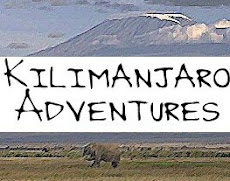
A recent blog from a Mountain Maddness climber talks about the difficulty of ascending via the Western Breach and the pitfalls of loose rock. We hear a lot about the dangers of altitude sickness, but one of the biggest problems on the Western Breach Route can be rock fall. I had a group of three climbers ascend it a few years back. They woke in the middle of the night to what sounded like thunder rolling down the mountain. They quickly realized it was boulders crashing toward them. One litterly bounced over their tent, missing them by a few meager feet.
A rock slide in 2006 killed three American climbers and injured several others. After this incident the route was closed for several months until the National Park Service opened a new route less prone to rock fall. Martha's report post last week leads me to believe there is still cause for concern.
The Western Breach Route has long been a goal of mine. The option to spend a night in the crater and get up close and personal with the glaciers is VERY tempting. But it is, by far, the most dangerous route on the mountain. Something to think about before booking!













